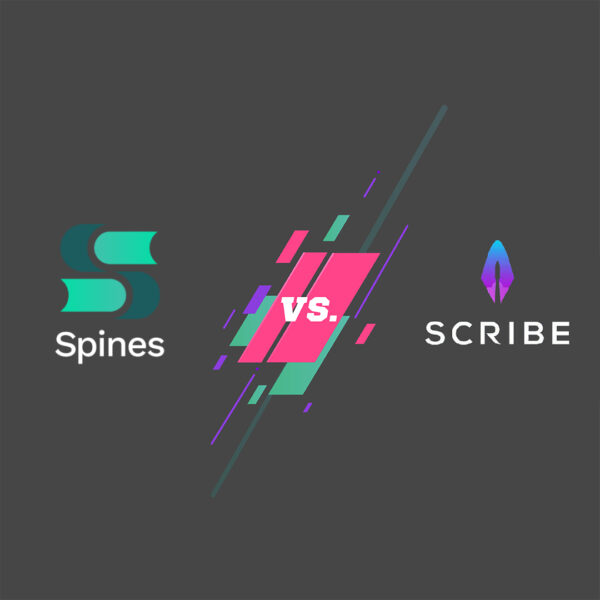So, you’ve got a book inside you—a thrilling adventure, a heartfelt memoir, or maybe the next big thing in cat detective fiction—and you’re ready to share it with the world. But instead of chasing traditional publishers with query letters and holding your breath for a callback, you’ve decided to self-publish a book and take control of your destiny through self-publishing. Bravo! You’re about to embark on an exciting, challenging, and wildly rewarding adventure.
But self-publishing isn’t all sunshine and record-breaking book sales. It’s a maze of choices: platforms, editing, covers, marketing, and a surprising number of moments where you might wonder, “What have I done?” That’s why we’re here—to guide you through the do’s and don’ts so you can navigate this publishing process like a pro.
And hey, if this feels overwhelming, remember: you’re not alone. Platforms like Spines are here to provide the tools and expertise you need to succeed. But first, let’s get to the nuts and bolts of self-publishing your first book.
Understanding Self-Publishing
Self-publishing is the process of bringing your book to life independently, without the backing of a traditional publisher. This means you have complete creative control over every aspect of the publishing process—from writing and editing to formatting and marketing. For many authors, this autonomy is a significant draw, allowing them to maintain ownership of their work and potentially earn higher royalties.
The self-publishing journey involves a myriad of tasks. You’ll start with writing and editing your manuscript, ensuring it’s polished and ready for readers. Next comes formatting and book cover design, crucial steps that can make or break a reader’s first impression. Finally, you’ll dive into marketing, a vital component to get your book noticed in a crowded market.
Platforms like Amazon Kindle Direct Publishing have revolutionized the self-publishing landscape, making it easier than ever to publish a book. These platforms offer a range of tools and resources to guide you through the publishing process, from templates and design software to marketing tips and distribution options.
One of the standout benefits of self-publishing is the speed at which you can bring your book to market. Traditional publishing can be a lengthy process, often taking months or even years. In contrast, self-publishing can get your book into readers’ hands in a matter of weeks, which is particularly advantageous if you’re writing about a timely topic or trend.
However, self-publishing is not without its challenges. It requires a significant amount of work and dedication. As the author, you’re responsible for every aspect of the publishing process, including book marketing and promotion. This can be daunting, but for those willing to put in the effort, the rewards can be substantial.
The Do’s and Don’ts of Preparing to Self-Publish
Do: Refine Your Writing Process
Self-publishing starts with a polished manuscript. That doesn’t mean just running spell-check and calling it a day. Craft engaging characters, develop your writing style and perfect your story arcs. Beta readers—those saintly folks willing to critique your work—are invaluable at this stage. They’ll tell you where your plot shines and where it drags (gently or not-so-gently).
Don’t: Skip Professional Editing
Sure, Aunt Susan might have an eagle eye for typos, but she’s no substitute for a professional editor. An editor can catch plot holes, refine your tone, and ensure your book is ready to compete in the publishing industry. Trust us—reader reviews won’t be kind if your protagonist changes names halfway through.
Do: Set Realistic Expectations
As a self-published author, your debut might not make you an overnight bestseller, but that doesn’t mean it won’t be a success. Understanding market trends, setting publishing goals, and identifying your target audience is essential to keeping your self-publishing journey grounded and focused.
Don’t: Underestimate the Importance of an Eye-Catching Cover
Judging books by their covers? It happens, especially in online stores. Investing in a professional cover designer to create an eye-catching cover can make all the difference in grabbing a potential reader’s attention.
Book Design and Formatting
Book design and book formatting are pivotal steps in the self-publishing process. A well-designed book not only captures the reader’s attention but also conveys your message effectively. Meanwhile, proper formatting ensures that your book is easy to read and navigate, enhancing the overall reader experience.
When it comes to book design, several key elements need your attention. The cover is your book’s first impression, so it should be eye-catching and relevant to the content. Interior design is equally important; a clear and aesthetically pleasing layout can make your book more enjoyable to read. Typography, the choice of fonts, and their arrangement should be consistent and well-chosen to complement your book’s theme and style.
Formatting is another critical aspect. This includes the layout of the text, the use of headings and subheadings, and the inclusion of images and other visual elements. A well-formatted book not only looks professional but also makes it easier for readers to follow along and stay engaged.
Many self-publishing platforms offer tools and resources to help you with book design and formatting. These may include templates, design software, and formatting guides. If you prefer a more hands-off approach, you can hire professionals such as book designers to ensure your book meets industry standards.
Navigating the Publishing Process
Understanding the Self-Publishing Landscape
Self-publishing is no longer the wild west. Platforms like Amazon Kindle Direct Publishing have made it easier than ever to publish a book, but many self-publishing platforms offer unique perks. Evaluate them carefully based on features, costs, and distribution options. Working with a self-publishing company can provide valuable support and resources throughout the publishing process.
The Publishing Industry vs. Self-Publishing
Unlike traditional publishing, where you might wait months for literary agents or a publishing house to respond, self-publishing offers complete creative control. You decide your book’s cover, release date, and even its price. Sure, that’s a lot of responsibility—but it’s also empowering.
Choosing the Right Platform
Some platforms excel in print distribution, others dominate the ebook market. Research is your friend here—and so are reviews from other self-published authors. Choosing the right platform sets the tone for your publishing journey.
Building Your Author Platform
Marketing Strategy Basics
Think of marketing as an extension of your book. Building an author platform on social media, creating a website, and leveraging email lists are essential steps to reaching your target readers. Remember: your book won’t sell itself (even if it’s that good).
Leveraging Reader Reviews and Beta Readers
Early reader reviews are gold. They boost your book’s credibility and encourage other readers to take a chance. Don’t be shy about asking your beta readers for honest Amazon reviews.
Personal Advice from Successful Self-Published Authors
Most self-published authors agree: that the road isn’t easy, but it’s worth it. Take inspiration from those who’ve walked the path before you—they’ve made mistakes, learned lessons, and paved the way for your self-publishing success.
Your Publishing Journey Awaits – Start NowCost-Effective Self-Publishing
Self-publishing can be a cost-effective way to bring your book to market, but it does require some investment. The costs can vary widely depending on the services and tools you choose to use. However, there are several strategies to keep expenses in check while still producing a high-quality book.
One way to save money is by handling as many tasks as possible yourself. This might include writing, editing your book, formatting, and marketing. While this approach can be time-consuming, it allows you to allocate your budget to areas where professional help is most needed, such as cover design or advanced editing.
Another cost-saving strategy is to utilize free or low-cost tools and resources. Many self-publishing platforms offer free templates, design software, and formatting guides. Additionally, you can leverage free marketing tools like social media and email marketing to promote your book without breaking the bank.
Printing and book distribution costs are another consideration. Many self-publishing platforms offer print-on-demand services, which allow you to print your book and distribute books as they are ordered. This eliminates the need for a large upfront investment in printing and storage, making it a cost-effective option for many authors.
In summary, self-publishing can be a budget-friendly option for authors willing to invest time and effort into the publishing process. By strategically managing your resources and knowing when to seek professional help, you can produce a high-quality book without overspending.
The Do’s and Don’ts of Launching Your Book
Do: Use Professional Services for Final Touches
Formatting matters. Hire professionals to ensure your book looks polished, whether it’s a paperback or an ebook format. From margins to typography, every detail affects readability.
Don’t: Forget About Marketing Post-Launch
Your book’s launch isn’t the finish line—it’s the starting gun. Use social media platforms, online stores, and even paid advertising to keep the momentum going. Remember, publishing a book is a marathon, not a sprint.
Do: Leverage Online Retailers for Wider Reach
Platforms like Kindle Direct Publishing make your book accessible to millions of readers. Optimize your book’s listing with strong keywords, an enticing blurb, and, of course, that eye-catching cover.
Don’t: Neglect to Monitor Market Trends
Publishing is a dynamic industry. Staying aware of trends ensures your strategy evolves alongside reader preferences and new tools in the publishing world.
Common Pitfalls and How to Avoid Them
The self-publishing process isn’t without its traps. Common missteps include underestimating the publishing budget, rushing to publish, and ignoring constructive feedback. Avoid these by taking your time, investing in professional services, and staying open to advice.
Measuring Self-Publishing Success
Self-publishing success isn’t just about book sales. Reaching your target audience, building your writing career, and receiving heartfelt messages from readers are victories worth celebrating. Set realistic expectations and focus on your long-term goals—you’ve got this!
Conclusion: Embarking on Your Publishing Journey
Congratulations, author—you’re on your way to transforming your manuscript into a self-published book. The road ahead is filled with choices, challenges, and triumphs, but with careful planning and a touch of persistence, you’ll find success in the publishing landscape.
As you dive into this journey, remember: that platforms like Spines are here to guide you every step of the way. From professional editing to marketing strategies, we’ll help make your self-publishing journey a story worth sharing. Ready to get started? Let’s turn your dream into a published reality!
Your Publishing Journey Awaits – Start Now






